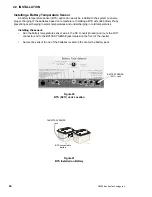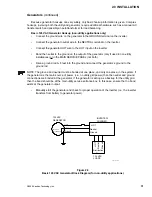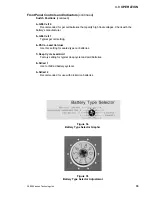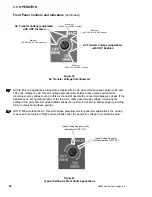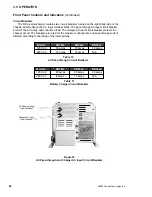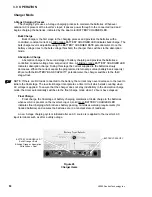
3.0 OPERATION
36
©2000 Xantrex Technology Inc.
Front Panel Controls and Indicators
All operating controls, indicators and sense connectors are located on the front panel of the unit.
The controls are easily accessible, and the LEDs provide inverter/charger status at a glance.
POWER ON/OFF Switch
The POWER ON/OFF control is a momentary contact switch that turns the inverter/charger
ON or OFF by pressing it once. When the inverter is first connected to the batteries, it will run
through a self test consisting of flashing the LEDs in sequence, operating the cooling fan
momentarily and switching the transfer relay three times. Once the self test has successfully
completed, the POWER ON/OFF switch is activated. Pressing the switch once turns the inverter
ON. Another press turns the inverter OFF.
Ports
There are two ports on the inverter/charger. Both ports are RJ11 type telephone style
connectors and are used for controlling the inverter and regulating the charger voltage based on
temperature.
COM PORT
COM PORT (J1) is a dual function RJ11 (6-pin) connector. Its primary function is to
provide serial communications to an optional Trace remote control unit (RC4 or RC8). The
port also acts as a stacking interface control when two DR Series inverters are used in a
series configuration. When two inverters are stacked, a remote control cannot be used with
either unit.
Remote Controls (RC4 or RC8)
DR Series inverters are designed to operate with either an RC4 or RC8 remote control
units. Both remotes incorporate a membrane switch with a single red LED display
combination to start and stop the inverter, as well as provide overall system operating status.
Solid
With AC line power present, the unit is charging the batteries while directing AC to
the load. With no AC line power present, the inverter is running on the batteries and
supplying AC to the load.
Blinking Slow (1 to 3 flashes @ 1 second intervals)
The inverter is in search mode (no load connected).
Blinking Fast (3 to 5 flashes @ 1 second intervals)
The inverter is charging the batteries.
Flickering (3 to 5 flashes @ 1 second intervals)
The inverter has detected an over-current error. The LED (and inverter) will turn OFF
whenever an over-current condition exceeds eight seconds.
Erratic Blinking (0 to 3 and 2 to 5 flashes @ 2 second intervals)
The inverter has detected an error condition caused by overheating, low battery
voltage, or high battery voltage.
OFF
The inverter is OFF.
The remote control must be connected prior to switching the inverter ON; otherwise, the
micro-controller will not recognize (or respond to) the remote. If the remote is not recognized,
switch the inverter OFF and then ON using the inverters front panel POWER ON/OFF
switch.
Stacking Interface
Whenever two DR Series inverters are used in a series (stacked) configuration, one unit
(primary) controls the other unit (secondary). Communication between the two inverters is done
via the COM port (J1). The first unit switched ON, using its front panel POWER ON/OFF switch,
becomes the controlling (primary) inverter.
Summary of Contents for Trace DR Series
Page 1: ...Installation Operator s Manual DR Series Inverter Charger ...
Page 2: ......
Page 81: ......
Page 82: ......
Page 83: ......



